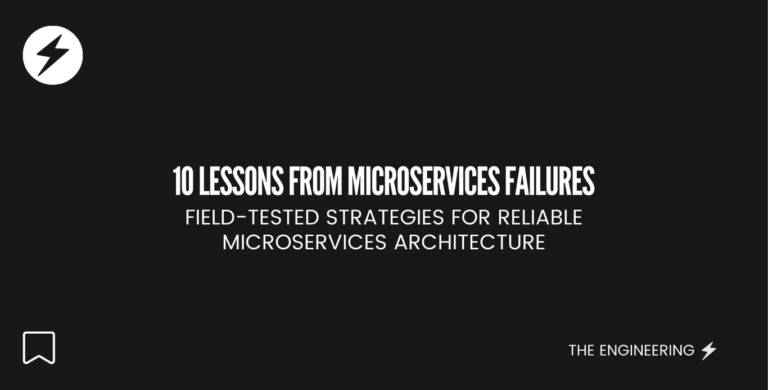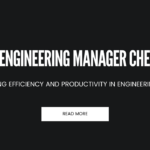Intro
In the ever-evolving landscape of technology, where innovation and agility reign supreme, the true driving force behind a tech company’s success lies within its high-performing engineering teams. These teams, akin to the gears of a finely tuned machine, are the architects behind groundbreaking products and cutting-edge solutions that shape the digital world we navigate daily.
Within our esteemed tech haven, we have witnessed the rise of exceptional engineering collectives that consistently transcend expectations, deliver excellence, and set new industry standards. These are not just teams; they are veritable powerhouses of talent, determination, and collaboration. In this journey through the corridors of high performance, we unravel the core traits that define our exceptional engineering teams and catapult them into a league of their own.
From fostering a culture of innovation that sparks creative brilliance to cultivating an environment of trust that fuels seamless collaboration, our high-performing engineering teams personify the very essence of synergy. They navigate complexity with grace, turning challenges into opportunities and setbacks into stepping stones toward achievement.
Join us in this exploration as we delve into the secrets of what makes these teams exceptional. Whether you’re an aspiring engineer, a curious technophile, or an industry aficionado, our tale promises insights that transcend the confines of corporate confines—a tale that celebrates the art and science of engineering prowess in its finest form. So, buckle up as we embark on this exhilarating journey through the DNA of high performance within our tech kingdom.
Create a compelling vision and mission for your engineering team
At the heart of every high-performing team lies a clear and compelling vision, along with a mission that sets the direction and purpose for their endeavors. Crafting a vision that resonates with team members’ aspirations and aligns with the organization’s goals is like charting a roadmap to success. A well-defined mission then breathes life into this vision, outlining the specific objectives, values, and strategies that will guide the team’s actions.
When the team shares a unified vision and mission, it creates a sense of purpose that fuels motivation, sparks innovation, and fosters a collective drive towards excellence. This shared sense of direction not only empowers team members but also attracts like-minded individuals who are inspired to contribute their best. By articulating a compelling vision and mission, you don’t just define your team’s identity – you ignite the spark that propels it towards greatness.
List the steps to conduct strategic planning activities
Strategic planning is the compass that steers organizations toward their desired future. To embark on this transformative journey, a structured approach is essential. Begin by conducting a comprehensive assessment of the current state, analyzing strengths, weaknesses, opportunities, and threats. With insights in hand, define a clear and aspirational vision for the organization’s future. Align this vision with a well-crafted mission statement that encapsulates the purpose and values guiding the organization.
Next, establish achievable goals and objectives that break down the path to success into manageable steps. Develop strategic initiatives and allocate resources, considering both short-term milestones and long-term objectives. Throughout the process, engage stakeholders, encouraging their input and buy-in. Finally, create a robust implementation plan, complete with timelines, responsibilities, and performance metrics. Regularly review and adjust the plan as circumstances evolve, ensuring it remains a dynamic and effective roadmap toward realizing your organization’s strategic aspirations.
Identify the resources engineering teams need to succeed
Empowering teams to achieve greatness requires equipping them with the right resources. These resources encompass not only tangible tools but also intangible elements that fuel collaboration and innovation. First and foremost, teams need access to cutting-edge technologies, software, and equipment relevant to their tasks. Adequate financial support ensures that budget constraints don’t hinder progress.
Beyond the material, fostering a culture of learning and development provides team members with opportunities to hone their skills and stay updated with industry trends. Clear communication channels and open access to information create an environment of transparency and shared knowledge. Equally important are time and talent—allocating dedicated time to focus on core tasks and assembling a diverse team with complementary expertise enhance problem-solving capabilities.
Recognizing and rewarding achievements further bolsters motivation. In essence, identifying and providing these resources nurtures an environment where teams can unleash their full potential and reach unprecedented levels of success.
Determine the skills leaders need to look for when recruiting high performance teams
Crafting a high-performance team begins with the careful selection of individuals who possess a unique blend of skills and qualities. Leaders seeking to assemble these exceptional teams should prioritize certain attributes during the recruitment process. Firstly, a solid foundation of technical expertise relevant to the team’s goals is essential. Alongside this, a track record of adaptability and problem-solving showcases a candidate’s ability to thrive in dynamic environments. Effective communication and collaboration skills ensure seamless interaction among team members.
Demonstrated leadership and the capacity to inspire and motivate others contribute to the team’s collective drive. A commitment to continuous learning and a growth mindset indicates a willingness to evolve and innovate. Equally important are emotional intelligence and empathy, as they foster strong relationships and effective conflict resolution. Lastly, candidates with a proven record of results and the capability to manage and prioritize tasks effectively are invaluable in driving the team towards success. By identifying these skills, leaders lay the foundation for a high-performance team that excels in every facet of its endeavors.
Explain how to create stretch opportunities for employees
Stretch opportunities are the crucible where professional growth and innovation flourish. To craft these transformative experiences for employees, organizations must first understand the unique talents and aspirations of each individual. By identifying an employee’s current skill set and areas of interest, leaders can tailor projects or assignments that challenge their capabilities. These challenges should push employees beyond their comfort zones while remaining attainable with effort and development.
Regular feedback and coaching provide guidance and assurance throughout the journey. It’s crucial to foster an environment where failure is seen as a stepping stone rather than a setback. Encouraging open dialogue and inviting employees to share their insights creates a sense of ownership over their growth. Stretch opportunities should align with the organization’s broader objectives, making the employee’s growth a win-win for both individual and company.
By crafting these growth-enabling scenarios, organizations catalyze professional development, boost motivation, and unlock untapped potential within their workforce.
Describe the primary components of conflict resolution
Conflict, a natural facet of human interaction, necessitates a structured approach for effective resolution. The primary components of conflict resolution encompass understanding, communication, and collaboration. Firstly, grasping the root causes of the conflict requires active listening and empathy to discern each party’s perspectives and concerns. Transparent communication, the second cornerstone, involves articulating feelings and viewpoints while actively seeking to understand the other party’s stance. Expressing emotions and grievances in a respectful manner promotes mutual understanding.
Collaboration, the final pillar, entails jointly brainstorming solutions, evaluating options, and negotiating compromises. This process fosters a sense of shared ownership over the resolution. Throughout, maintaining emotional intelligence is pivotal, as managing emotions prevents escalation.
Conflict resolution culminates in a mutually agreed-upon solution that benefits all parties involved, thereby transforming discord into an opportunity for growth and strengthened relationships.
Build bench strength and succession plans
The foundation of organizational longevity lies in the cultivation of bench strength and the meticulous design of succession plans. Developing a robust pipeline of talent is essential to ensure a seamless transition of leadership and critical roles. Identifying high-potential employees and providing them with targeted development opportunities not only enhances their skills but also prepares them for future responsibilities.
These development paths encompass mentorship, cross-functional exposure, and leadership training. Simultaneously, crafting succession plans entails identifying key positions and outlining the competencies and experiences required to excel in those roles.
By aligning these plans with the organization’s strategic goals, leaders ensure a clear path for talent to ascend the ranks. Regularly reviewing and updating these plans guarantees their relevance and adaptability to changing circumstances. Ultimately, building bench strength and succession plans safeguards organizational continuity and empowers emerging leaders to step confidently into their roles, maintaining the trajectory of success.
Closing thoughts
As we traverse the dynamic landscape of organizational excellence, the convergence of strategic planning, skillful talent development, and collaborative teamwork illuminates our path to enduring success. Guided by these principles, we forge ahead, navigating the intricate realms of innovation and expansion. By nurturing high-performing teams, embracing change with flexibility, and investing in the growth of our personnel, we sculpt a legacy that transcends the present and shapes a future characterized by unparalleled achievement.
Together, we embark on a journey that not only celebrates our accomplishments but also underscores our resolute dedication to fostering an environment where greatness flourishes. Here’s to the fusion of collective endeavor, the essence of innovation, and the anticipation of a tomorrow that eclipses our current horizons.





[…] In the dynamic landscape of modern workplaces, the role of a leader transcends beyond mere supervision to becoming a catalyst for team growth, innovation, and cohesion. A holistic leadership approach that incorporates setting clear goals, providing feedback, nurturing a positive environment, and more can significantly amplify team potential. Here’s how leaders can integrate these facets to foster high-performing and motivated teams. […]
[…] 🌟 Month 12: The Humble Leader […]